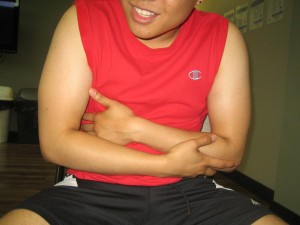There are different types of hernias that occur among women based on where they occur. Inguinal, femoral, umbilical and ventral are the types of hernias that usually affect women. Essentially, the symptoms of hernia are quite similar in both men and women. Nevertheless, it is still vital to recognize the symptoms and seek immediate treatment. If you want to learn more about this condition, it is possible by enrolling in a course on first aid today.
Always bear in mind that consulting a doctor is a must for this condition. Once a doctor is consulted, proper assessment or evaluation is carried in order to determine the exact type of hernia that developed. This will allow the doctor to start the suitable treatment option to prevent further complications from developing.
Femoral hernia
The common symptoms of a femoral hernia include tenderness or pain within or around the groin. Women are more likely to suffer from femoral hernias. Take note that the pain is noticeable when the individual is bending or lifting heavy objects and if pressure is applied.

In most cases, a tender lump can develop in the site where the hernia has developed along with a heavy sensation at the site. There is also a change in the excretory functions such as difficulty urinating and constipation. Depending on the location of the hernia, some are more likely to experience menstrual cramps or those that are intense than normal. In severe cases, there is a change in the flow of the period that some find distressing.
Ventral hernia
A ventral hernia develops when a part of the abdominal muscles weakens and the intestines push through a tear. Ventral hernias do not have any symptoms but there is a bulge beneath the skin on the abdomen. If the intestines become lodged in the tear, it can disrupt the blood supply in which the individual can suffer from severe stomach pain, nausea or vomiting.
Inguinal hernia
An inguinal hernia develops once the soft tissue bulges through a tear in the abdominal wall. This type of hernia among women can cause pain especially when coughing, bending over or when lifting heavy objects. As the hernia progresses, there is a bulge on either side of the pubic bone.
Umbilical hernia
An umbilical hernia develops once the intestines protrude via the abdominal muscle close to the navel. This is quite common among infants but can also occur in adults as well. When it comes to an umbilical hernia, the individual will develop a bulge close to the navel that is sore or tender. If this bulge is noticed by the individual, it is best to consult a doctor right away so that proper assessment and treatment can be started as well as prevent long-term damage.
